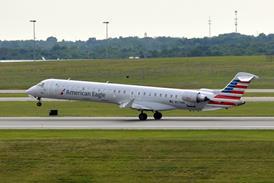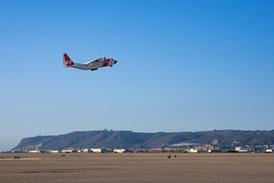The year 2000 is a reminder that a good safety record is a judgement of past performance: it does not guarantee the future
David Learmount/LONDON
The year 2000 proved that even the mighty can fall. Air France's Aerospatiale/British Aerospace Concorde not only suffered the type's first fatal accident, but the whole fleet was grounded as a result. Singapore Airlines had its first fatal accident since the company was formed - although subsidiary Silk Air has seen a disastrous crash. And although no-one was hurt in Southwest Airlines' overrun accident last year, that was more by luck than judgement, and the event has blighted an impeccable safety record for the airline which has proved, over the years, that low fares do not have to mean corner-cutting on safety.
Airline accident fatality figures in 2000, at 1,126, were well up compared with the previous year (730), but fatal accident numbers were much reduced, with 37 compared with 48. Compared with the annual average for the decade at 1,246, fatalities for last year were just below the line. Overall, the number of accidents started the 1990s at a low, peaked in 1996, and has gradually dipped back almost to its 1990 level of 35.
Apart from the Concorde accident, the most horrifying was undoubtedly the Alaska Airlines McDonnell Douglas MD-80 crash. Although the final accident report is yet to come, the US National Transportation Safety Board believes that the likely cause was that the jackscrew controlling the horizontal stabiliser snapped, possibly because of poor maintenance checks and inadequate lubrication. The aircraft became completely uncontrollable, bunting at-3g into an almost vertical spiral dive from some 20,000ft (5,080m). Revelations by the Federal Aviation Administration of poor maintenance practice, discovered when it carried out vigorous checks of Alaskan after the accident, showed the airline to have been lucky to have achieved the sound safety record that it had enjoyed up to that point. It also suggests that FAA oversight itself may be called into question by the final report.
There have been at least four fatal accidents in which a major contributory cause appears to have been pilot disorientation in situations which should not have taxed the pilots' abilities. The fact that the pilots of the Crossair Saab 340, which crashed on 15 January, came from Eastern Europe and had received most of their training and operational experience on traditional Russian types is being examined as a possible factor in the pilot's almost certain spatial disorientation. The design of a Russian artificial horizon (AH) has the aircraft symbol moving relative to a "horizon" bar that rolls and pitches with the aircraft cockpit.
Aviation psychologists say that, because the aircraft symbol moves relative to the pilot, it is strongly perceived as the object he is controlling, making the model more compelling.
In Western types, which attempt to simulate reality, the aircraft symbol moves with the cockpit, and the horizon bar imitates the real horizon. The difference can result in confusion for a pilot trained on one but flying the other.
The factor that is believed to have toppled the Crossair pilot's concentration, however, is that he had started a left turn to follow the standard instrument departure, but the flight director began demanding a right turn because that was the shortest arc to the just-tuned waypoint beacon. This raises questions about flight management system usage procedures.
Of the other disorientation events, two (Alliance Air and Gulf Air) involved pilots approaching an airport too high and fast, and carrying out an approach orbit to lose height. The Alliance Air Boeing 737-200 crashed in haze during the orbit, and the Gulf Air Airbus A320 crashed at night into a calm sea during the go-around which followed an unsuccessful orbit. Finally, a FedEx Cessna Caravan pilot appears to have lost control in a sadly familiar situation, flying at night under special visual flight rules into deteriorating weather.
Apart from the Fedex accident, in which the clear question is whether the pilot should have attempted the flight at all under the prevailing conditions, the others all raise questions about pilot training.
Source: Flight International























